For the final stage of my Golden Egg project (see Part 1 in the Baelfyr AS LVI 29(3) and at https://flintheath-as.dreamwidth.org/2570.html and Part 2 in the Baelfyr AS LVI 29(6) and at https://flintheath-as.dreamwidth.org/2981.html), it was time to make the girdle itself using silk.
I wasn’t able to get silk in the shades I wanted and that I used for the test piece, so I used two shades of a darker green. The first notable thing was how much finer the silk was than the wool (Figure 1). It seems obvious, but it not only needed a much thinner weft but could also be packed down much more. Jahanara pointed that out and it made quite a difference (Figure 2)! It also meant that I needed some slightly different tools; I had been beating down the weft with the shuttle, but my shuttle is quite chunky, so it wasn’t very effective with the fine threads. Instead, I started using a pencil.

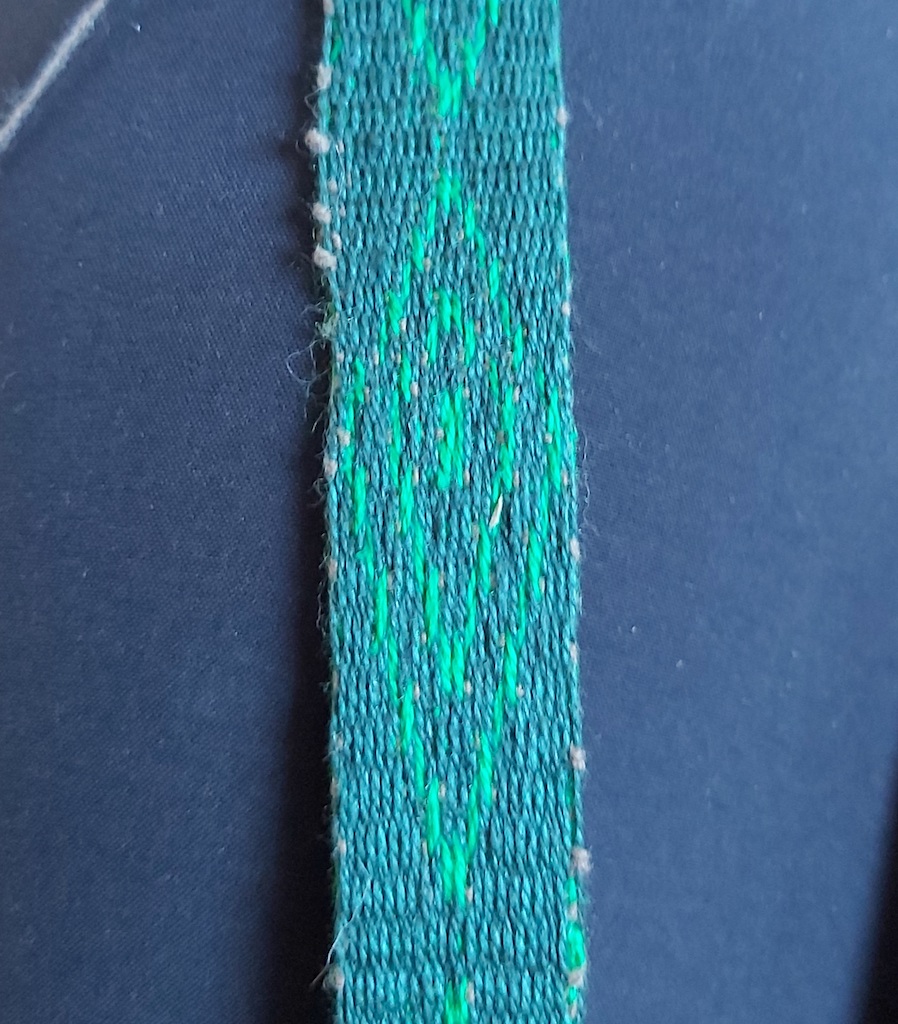
I was glad to have done the practice run, since it meant I already knew how the technique worked. The silk was also a lot smoother than the wool had been, which meant that the lozenges showed up well even though there was less contrast between the colours (Figure 3).
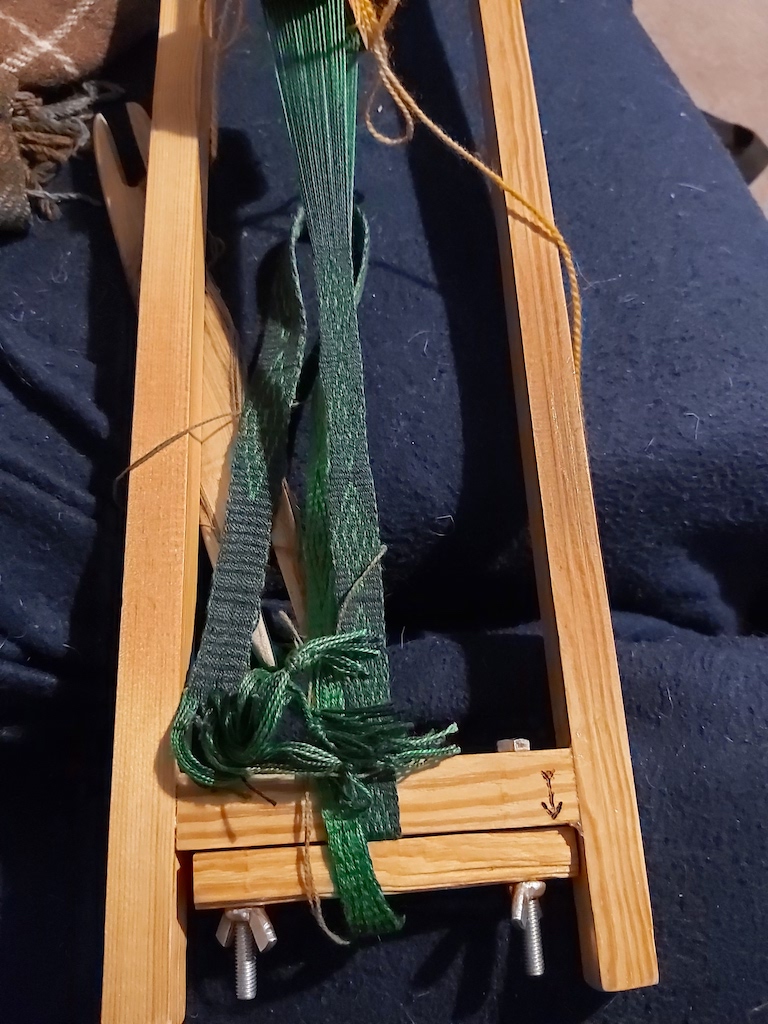
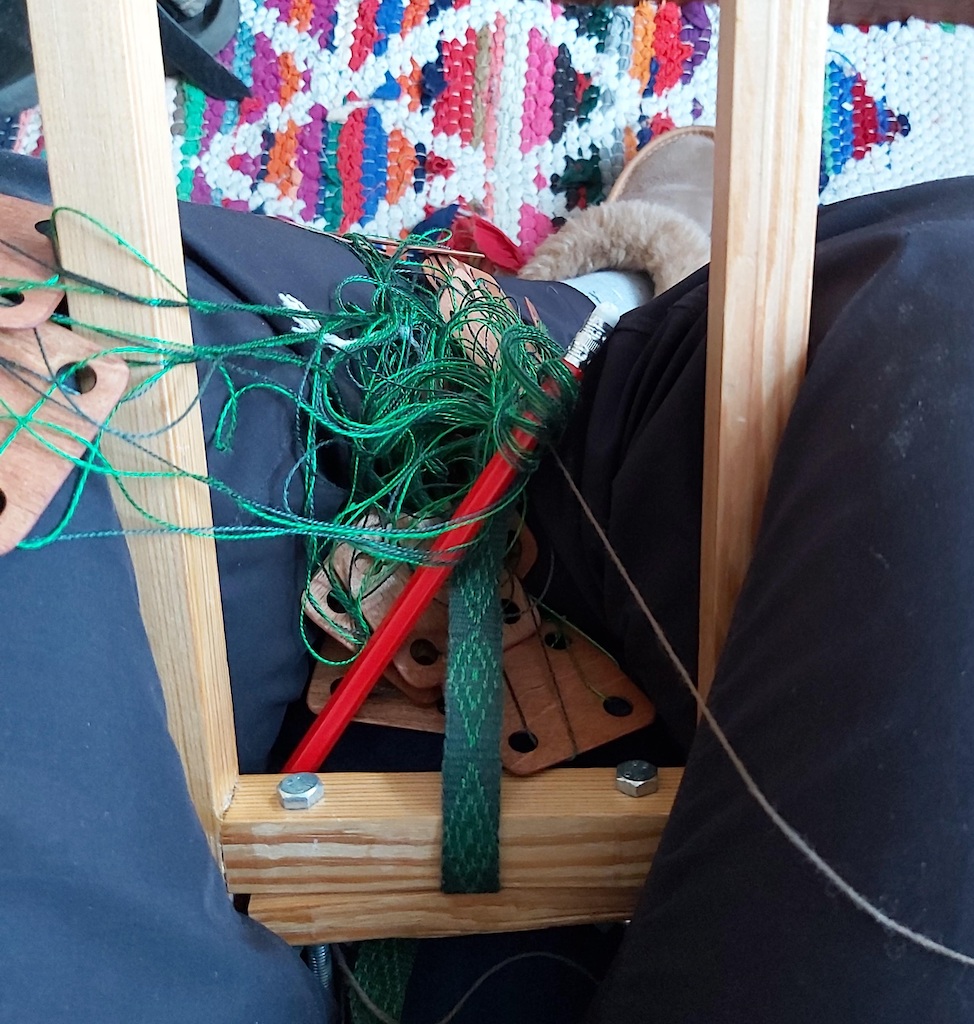
Unfortunately, I also had the same major problem as in the test run: the string holding the warp to the end of the loom snapped (Figure 4). I suspect it wore against the end of the loom, but once again I had to reconstruct the tablet pack. Fortunately, the shed had again been preserved because I was in the middle of beating down the weft. I could use that to untwist the end of the warp on the nearer side of the tablets (Figure 5) and then stack them up so I could untangle the far side (Figure 6).
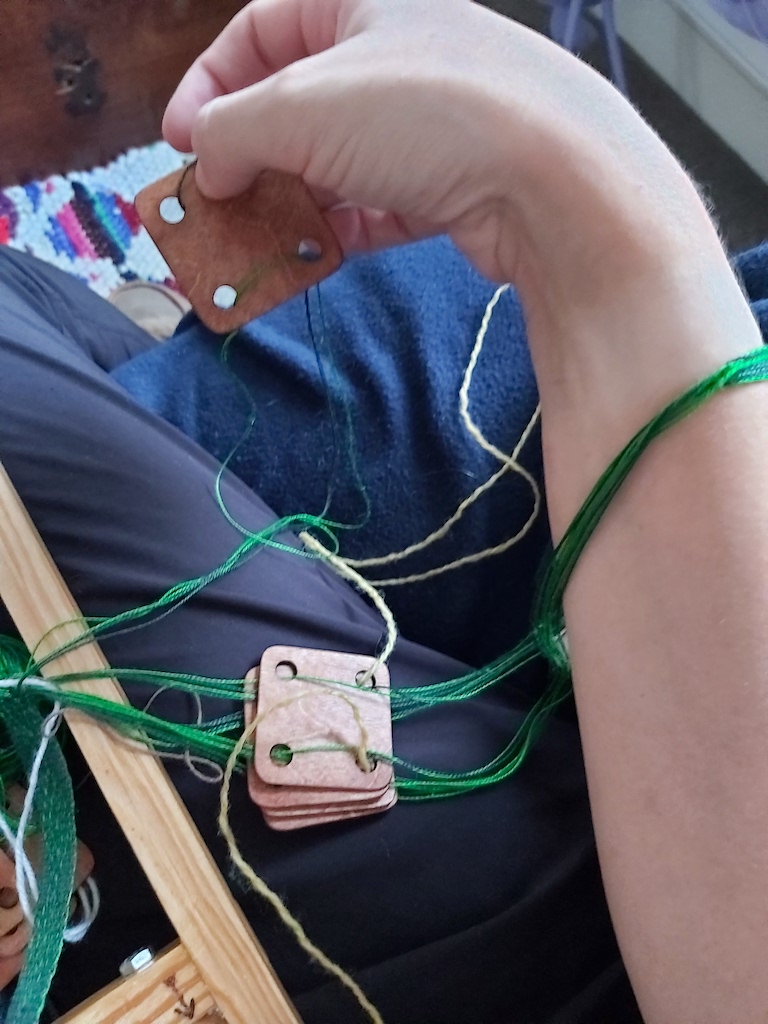
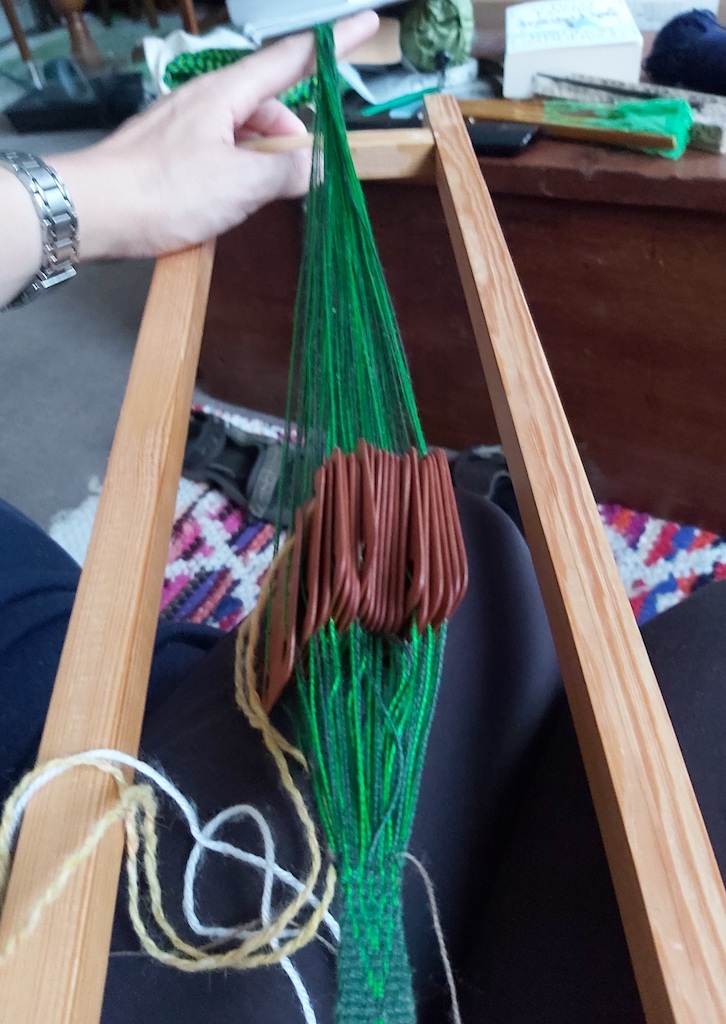

It wasn’t perfect – I never did work out why some of the warp ended up slack – but it would do (Figure 7)!
Once the finished piece was off the loom (Figure 8), it was time to add the finishing touches. The original poem mentioned gold fittings, which was beyond my budget, so I had already decided to use brass since it would at least be a yellow metal that would pass well enough at a glance. For the buckle end I decided to use a plain D-ring. The shape was inspired by one I saw in Rosalie Gilbert’s collection (Figure 9), originating in Kent in the 14th-15th Century. This is about the right period, so I decided a similar shape would work for this project (Figure 10).
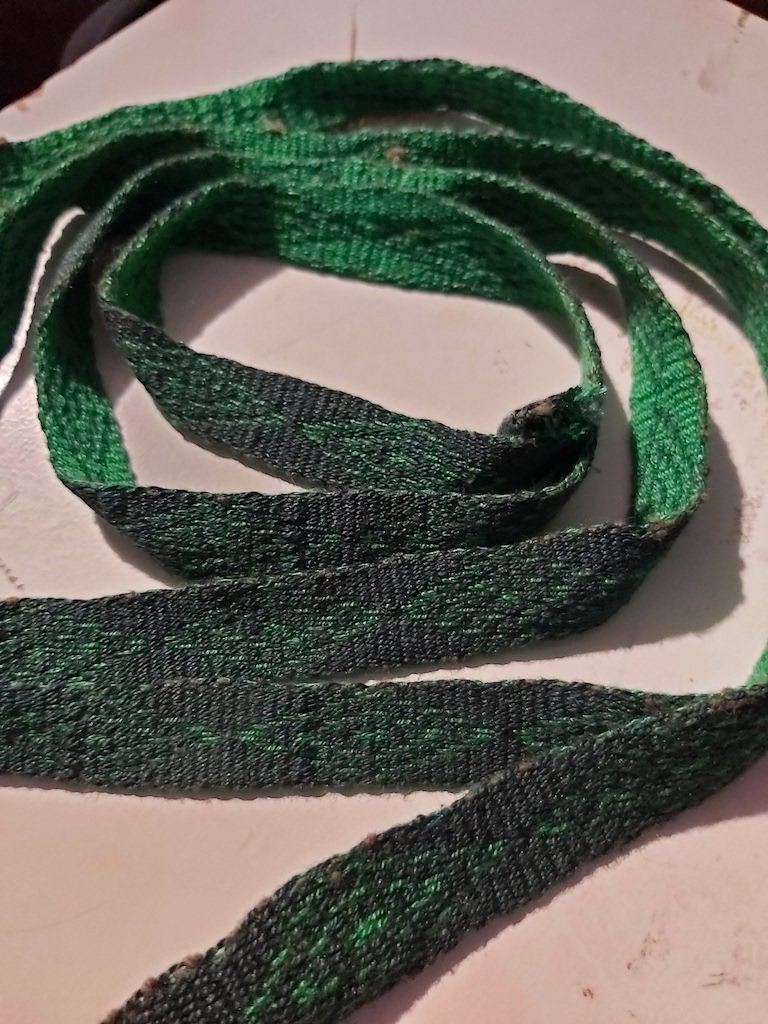
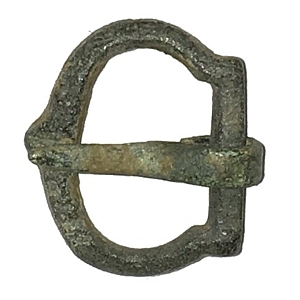

I did use a plain loop rather than a buckle. I would like to say this was in reference to the fact that the girdle on Anne of Bohemia’s effigy (see Part 1) didn’t appear to have a pin on the buckle, but really it was because I didn’t want to damage the weaving I’d worked so hard on by cutting holes for the pin to pass through.
I ended up not putting a metal plate on the tail end of the girdle due to difficulty in finding one that was the right shape for the period but also small enough to pass through the D-ring. Instead, for the tail end and to attach the D-ring I took advantage of the mention in the poem that the girdle was embroidered and used some gold-coloured thread to sew down the ends (Figure 11). It came out a little messier than I wanted because it was extremely difficult to force a needle through two or three layers of close-woven silk.



And then it was finished! It works both as a girdle (Figure 12) and as a baldric (Figure 13), which was how knights of the Round Table would go on to wear green bands in Gawain’s honour.
[T]he lords and the ladies that whoso belonged to the Table, every knight of the Brotherhood, a baldric should have, a band of bright green obliquely around him, and this for love of that knight as a livery should wear. For that was reckoned the distinction of the Round Table, and honour was his that had it evermore after, as it is written in the best of the books of romance.
(Translated to modern English by J.R.R. Tolkien)
References:
- Gilbert, Rosalie. “The Gilbert Collection – Buckles without Plates without Belt Fragments.” Rosaliegilbert.com, https://rosaliegilbert.com/thegilbertcollection_buckleswoplates.html.
- Tolkien, J R R. Sir Gawain and the Green Knight. edited by Christopher Tolkien, London, HarperCollins, 2006.
Image credits:
- Figure 9: © Rosalie Gilbert, the Gilbert Collection https://rosaliegilbert.com/thegilbertcollection.html, used with permission
- Figures 12 and 13: Taken by Cindy Peterson (Duchess Fiona) at my request (thanks!)
All other photos taken by me.
Acknowledgements: Thanks again to Shannon, Nick, Jahanara, and Henric for all their help and support, as well as to Rosalie Gilbert for her help and the use of photos of her collection.